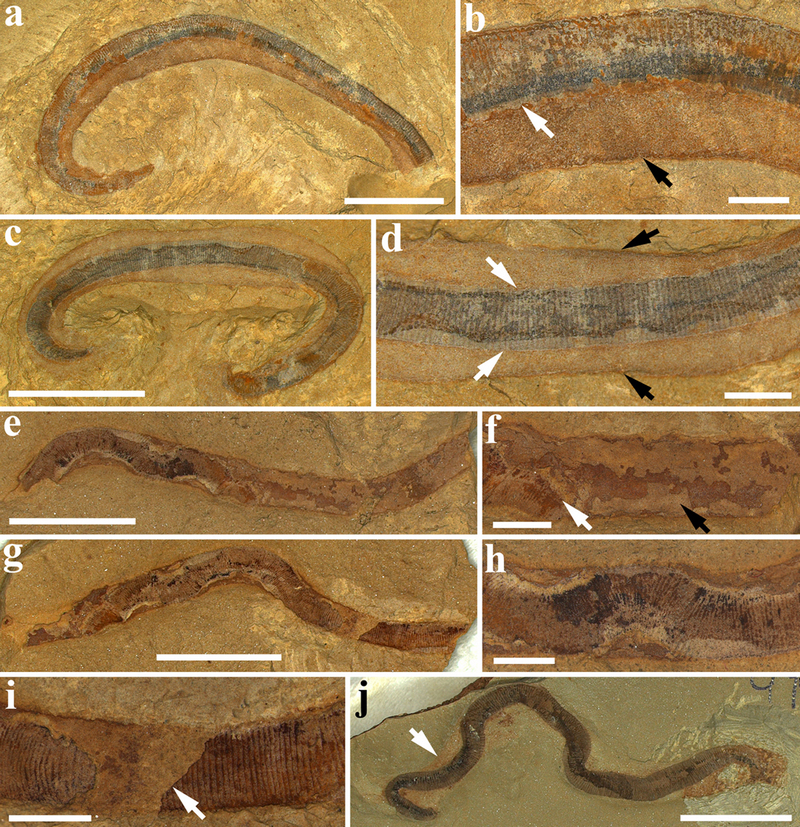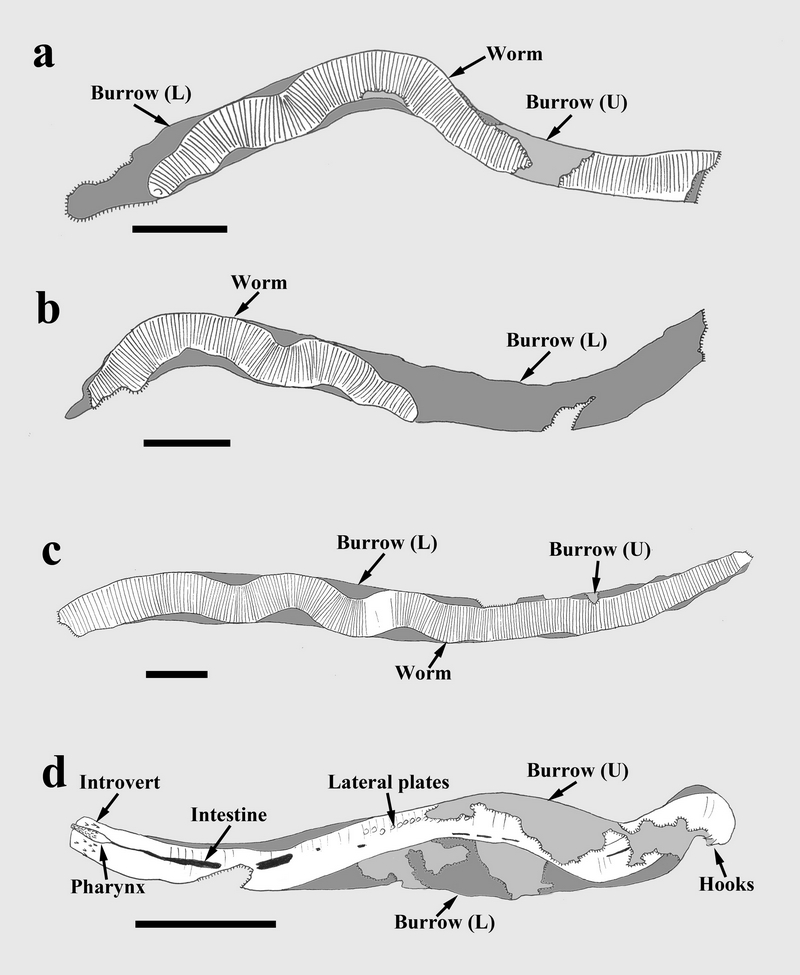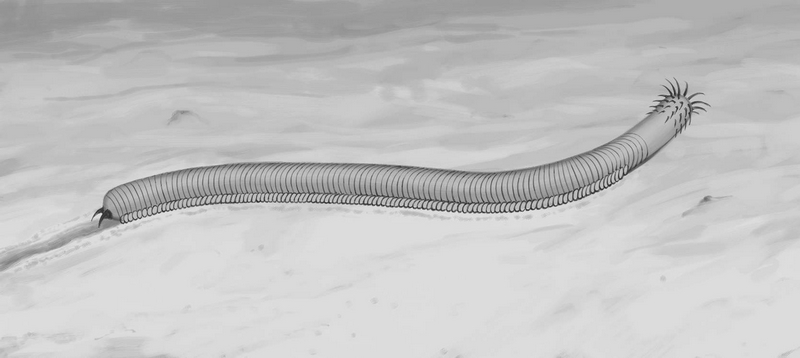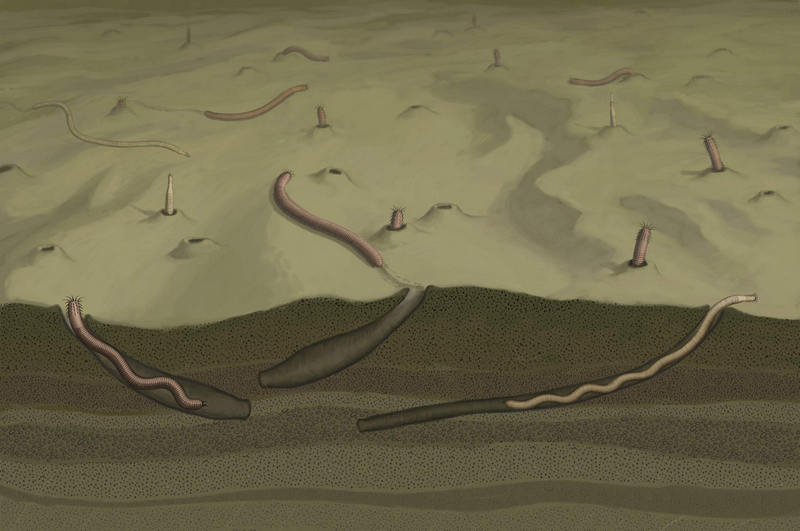Palaeoscolecdians are common worm fossils from Cambrian and Ordovician. Most scientists believe palaeoscolecdian worms can be assigned within the phylum Priapulida. Most research on palaeoscolecdians focus on taxonomy but their lifestyle were poorly-known. Some authors suggested an epifaunal lifestyle for these worms but others believe they are in faunal animals. However, the burrowing evidence is poorly-known to date except limited information from the Chengjiang fauna.
Professor HUANG Diying from Nanjing Institute of Geology and Palaeontology, Chinese Academy of Sciences first suggested a burrow dwelling behavior of palaeoscolecdians in his Ph. D thesis since 2005. Some authors suggested a similar behaviour of Maotianshania cylindrical from the Chengjiang fauna in the later publication. After carefully re-examination on the type material, the previous so-called Maotianshania cylindrical are in fact Cricocosmia jinningensis and Mafangscolex sinensis. These three forms are the most abundant worms in the Chengjiang fauna but displayed different distributions.
The present study indicates different morphology of burrows on Cricocosmia jinningensis and Mafangscolex sinensis on the basis of numerous specimens from various fossil localities. The potential mode of construction and taphonomy is also supposed. A similar burrow dwelling behavior is still present in modern priapulid worms namelyMaccabeus. In additional, the locomotion of Cricocosmia jinningensis and Mafangscolex sinensis are also suggested.
This project was supported by Chinese Academy of Sciences, National Basic Research Program of China and the National Natural Science Foundation of China.
The research results have been published in Palaeogeography, Palaeoclimatology, Palaeoecology (HUANG Diying, CHEN Junyuan, ZHU Maoyan, ZHAO Fangchen, 2013: The burrow dwelling behavior and locomotion of palaeoscolecidian worms: New fossil evidence from the Cambrian Chengjiang fauna. Palaeogeography, Palaeoclimatology, Palaeoecology 398: 154-164).

Fossils of the palaeoscolecidian worms

Explanation of the fossils


Ecological reconstruction
(Information Source: Nanging Institute of Geology and paleontology, CAS)

